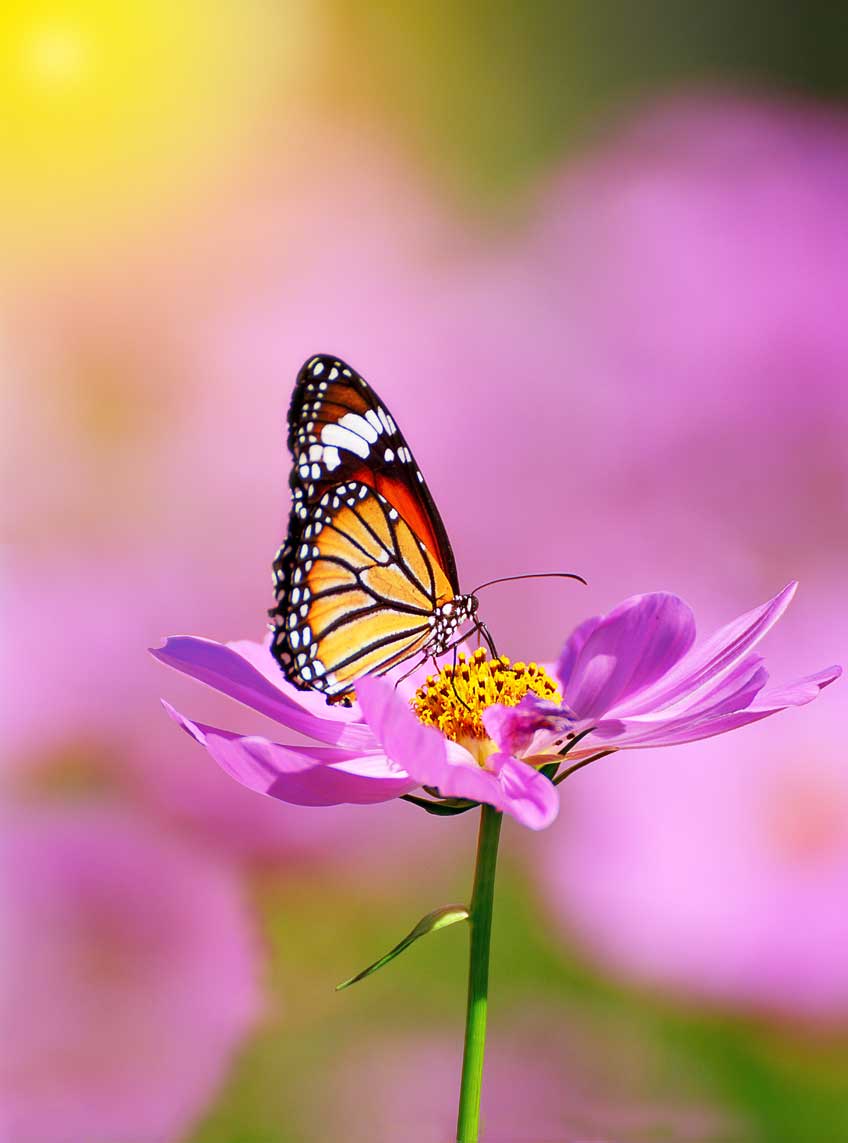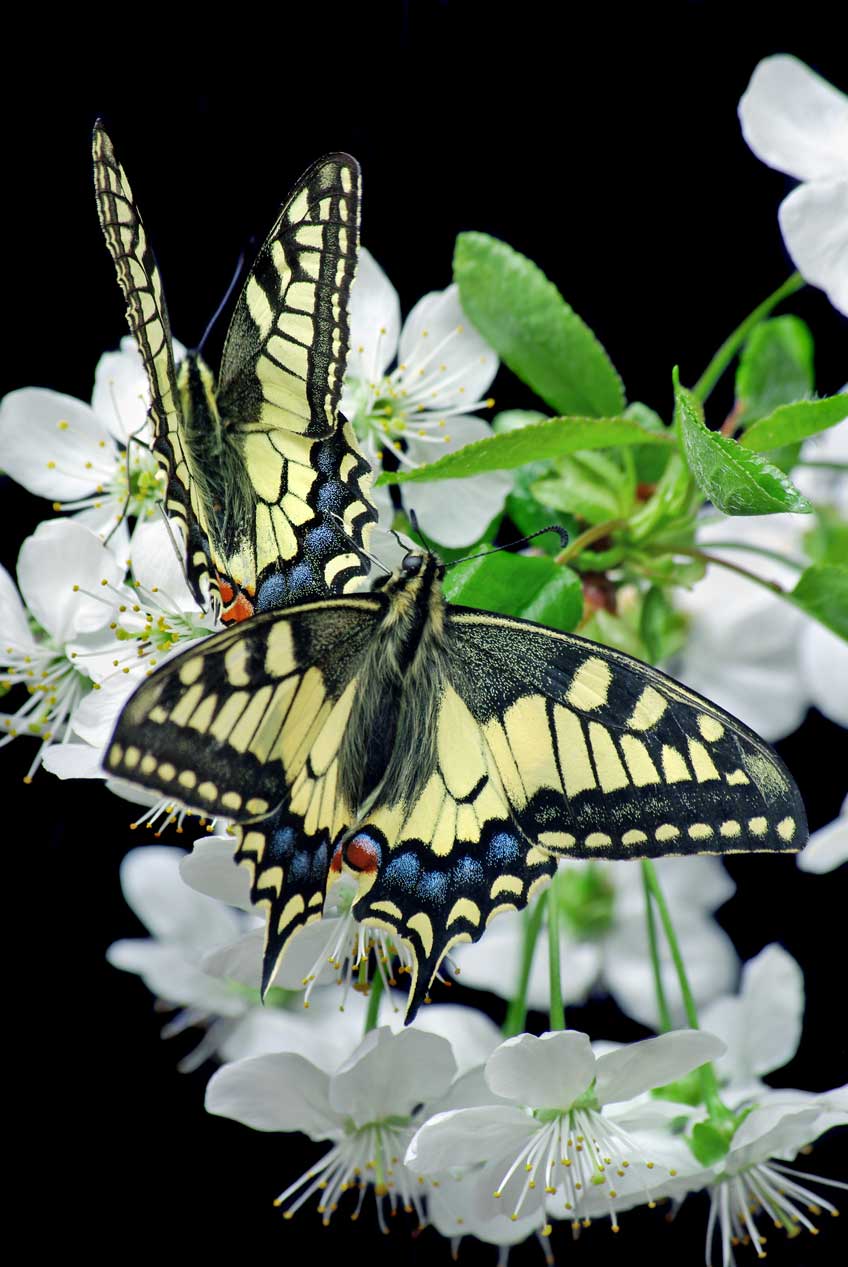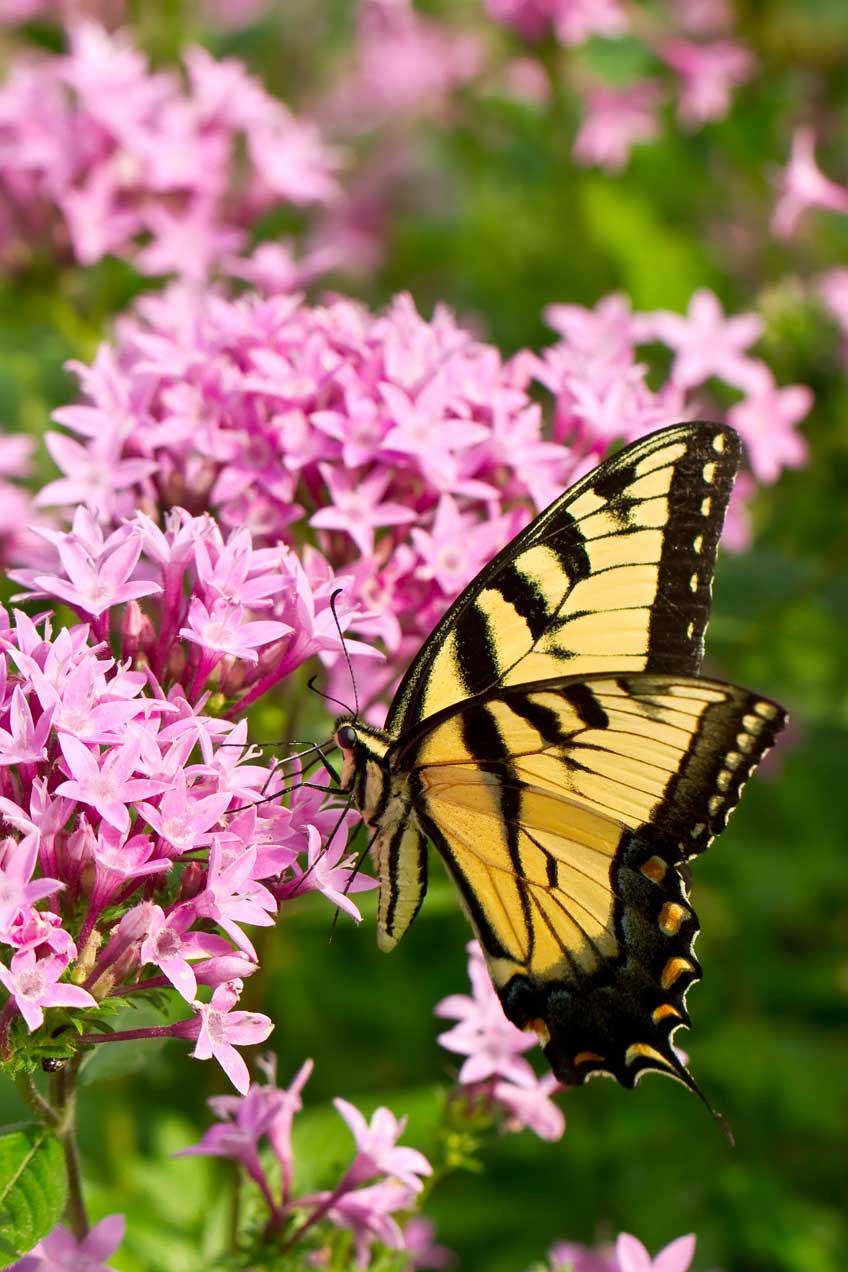When I think about things that spark joy I think butterflies.
The singular most joyous event in my garden is the appearance of a butterfly: fluttering wings of the prettiest colours; a quick flit across the garden, up and down, looping the loops, surfing the air like a wave of light. Each sighting makes me feel so good I often ponder how I can attract more butterflies into my garden at Frog Hollow. This is what I’ve learnt so far.

Photo by Tawan Teerak
Words: Linda Ross
Habitat
Butterflies love the sun. They use the sun to warm and orient themselves in the morning, but will seek out a shady spot in the middle of the day in the
middle of summer. They eat under the sun’s rays so must have sunny spots to land on flowers. They need flat rocks and fence posts in sun so they can
warm and bask their wings. They also need a windbreak to protect them from strong winds.
Dining, butterfly-style
Butterflies taste with their feet and use a long, straw-like structure called a proboscis to drink nectar and juice. (I’ve seen them sitting on pieces
of pineapple at the Singapore Airport Butterfly garden, drinking a Pina colada!)
Ensure a succession of flower throughout the seasons. Maintain a diversity of height, colour and flowering periods – mixing things up is the way to go.
Butterflies are particularly drawn to blue, yellow and red, but are attracted to a wide range of colours. A pretty cottage garden will give plenty
of interest around the year for both butterflies and humans, but keep clumps of colour a good size to make them irresistible, rather than breaking
them up for a more dotty effect.
Choose plenty of nectar-rich flowers. Those with flat-topped umbels or short flower tubes are best. You can’t go wrong with pentas, ixora, daisies, achillea,
zinnia, salvia, lavender, buddleia and snapdragons.

Photo by Kriachko Oleksii
Life-long eating
Think about the plants that feed all butterfly life stages, including the caterpillar. Caterpillars are specific eaters. Females will only lay their eggs
on certain plants and will be able to smell the host plants from miles away. More information your local butterflies and what they eat can be gained
at your local butterfly group.
Water
Butterflies like to suck water through damp sandy muddy puddles. You can mimic this in the garden with large saucers of muddy soil placed throughout your
garden.
Avoid pesticides
Pesticides will kill all kinds of butterflies: caterpillars, larvae and adults. Get to know what the caterpillar for each of your butterflies looks like,
so you can be satisfied in sacrificing a few chewed leaves for these exquisite winged creatures.

Photo by Lorraine Hudgins
Hail the monarch
The butterfly on these pages is the monarch butterfly, a common sight in many Australian backyards. The monarchs arrived from North America in the early
1870s, along with their favourite host plant, the weed we know as milkweed. In the summer the females lay a single egg under a milkweed leaf. When
the caterpillar hatches it eats the leaves and flowers of the milkweed, which makes it toxic to predators -except for the pied currawong and black-faced
cuckoo shrike which aren’t affected by the toxin. When the weather starts to cool in April thousands of monarch butterflies head for specific trees
at sites in the Sydney Basin and the Hunter Valley. They hang in the trees, mostly dormant, until the weather warms again in September.